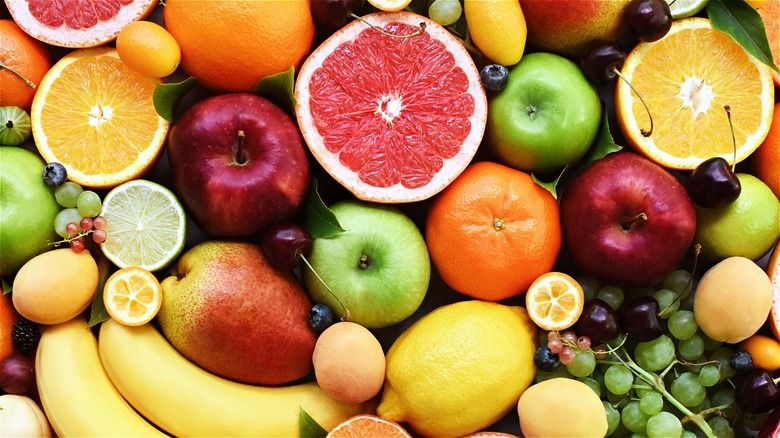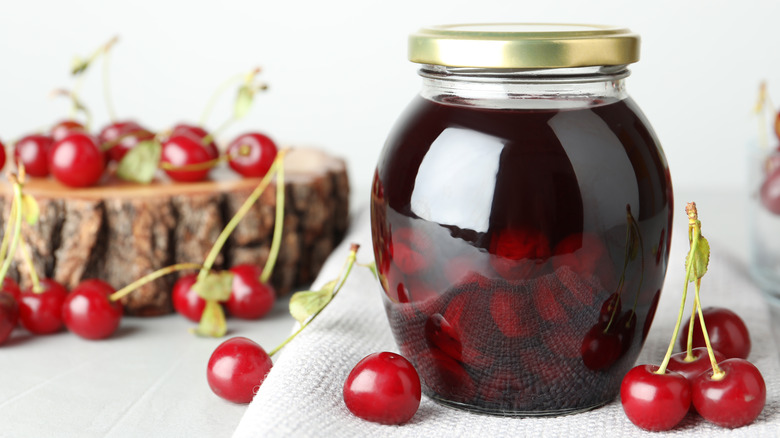The Best Fruit To Pickle (And It's Not A Cucumber)
So you have apple cider vinegar, water, sugar, and salt. Now that you have all of the basic ingredients for brining, you must ask yourself an important question — what to pickle? That's when cherries make their grand entrance. Cherries are not only delicious and a healthy snack, but a fruit that mixes a slight sourness and sweetness in it, making it the best fruit to pickle.
The steps to pickle cherries are pretty much the same as pickling anything else. Wash your cherries, cut them as you like, pack them, and pour over your homemade brine before storing them in the fridge overnight. Ideally, you are doing this while it's cherry season (around May through July per Urban Farmie), so you can have all the cherries you could want throughout fall and winter.
Paste Magazine suggests that if you are more into sweetness than tartness, then add cinnamon, nutmeg, or cardamom to your brine. If you prefer a spicy touch, add ginger or black pepper. Sweetness is very important for any fruit brine, as it enhances its natural flavor. But, you can substitute sugar with stevia or allulose if you wish. After a whole day in the fridge, you are ready to serve your pickled cherries in endless sweet and sour combinations.
Go beyond just cherries
Pickled cherries can go with almost any meal, snack, or treat. Add your pickled cherries to your breakfast toast with cheese, over your pancakes or oatmeal porridge, or serve it along with a slice of cake or ice cream. Give it a try in a fancier snack as well. Heat your brie cheese for your charcuterie board and serve it with the pickled cherries on top. Decorate with thyme or mint. It shouldn't be just a spread or jam, you can add it to a cocktail or a refreshing lemonade.
After trying pickled cherries, it is normal to want to try your hand at other fruit as well. You can try pickling some of your favorites from sweet grapes to strawberries. For any pickle, just work on your brine thoroughly. Everyday Health suggests using lidded jars so you can pour the brine in a hotter temperature and seal it safely. Just be sure to make enough. You don't want to wait for another fruit season to enjoy this delicatessen again.

